Header logo
header top contact widget
Receded Gums
AI in Dentistry – A Good Thing.
Posted on Jul 05, 2023 by William J. Claiborne, DDS MS
I remember when microwave ovens first appeared on the market. My mom wouldn’t even go near one in operation. Now, we know how to use them and the good things that come from their use.
Shoot forward 50 years and, like it or not, AI (artificial intelligence) is here. Self driving cars and round vacuums that move along floors are no longer Jetson-like imaginings. They’re blending into our lives in ways that are beneficial and non-threatening.
Like the microwave oven easing its way into day-to-day living, it’s logical that some people fear AI as a bad thing. After all, movies made decades ago prompted a vision of robots meandering among the human race as a new, threatening species.
As an Asheville periodontist, I’ve already seen – and incorporated in use – the positive aspects of breakthrough technology. Understanding its detection capabilities and accuracy, I’m particularly excited about the potential AI brings to the medical and dental fields.
You may be surprised to know that dentists are already beginning to turn to AI technology to quickly and accurately detect and prevent periodontitis, decay, bone loss and other gum health issues.
For example, a medical technology company in Boston has developed an AI platform that can assess X-ray images to an extent of over 50 times what can be detected by dentists through visual reviews. This allows dentists to give more effective treatment recommendations for patients while supporting the potential to avoid (or minimize) existing problems from developing or worsening.
For patients, AI assessments can also be reassuring. For those who anticipate particular treatment needs – a root canal, for instance – these assessments can zero in on exact issues so treatment planning is as conservative and as minimal possible, while being fully effective for the particular need.
Not just in medical and dental offices, but we’ll likely see AI used mainstream in many sectors. It can optimize accuracy in organizational materials, financial and budget projections, construction, farming, etc. For those of us in the periodontal dental field, AI has a vast potential to greatly improve the oral – and overall – health of our population.
Gum disease affects over 47% of American adults. With the help of AI, we can identify a higher percentage of cavities in earliest development stages while cutting the rate of misdiagnosis in half (thus curtailing over-treatment, in some cases). AI analysis will also aid in early detection of abscesses, lesions and oral diseases. It can prove to be a remarkable asset in catching oral cancer, helping to increase its poor survival rate or minimize the severity of treatment.
Through decades of research and extensive studies, keeping good oral health has been shown to be a supporting factor in good overall health. By keeping the “bad” bacteria in the mouth to manageable levels, the immune system operates more efficiently. Too, risk of medical complications from diabetes, heart disease and other illnesses can be significantly decreased.
It is suspected that many people are unaware that they even have periodontal (gum) disease, mainly because gum disease often begins with no obvious symptoms of its presence. Then, once symptoms appear (such as seeing blood in the sink when brushing), people may shrug this off as normal, or merely a sign they are being thorough in their brushing technique.
Gum disease is a particular problem for our aging population. The normal aging process dries out our hair, skin, and yes, the mouth. When the mouth is dry and saliva flow is insufficient, bacteria accumulation is more likely. This, in turn, provides a more welcoming environment for bacteria growth.
Too, many medications on the market – both prescription and OTC – have a side effect or oral dryness. This is double trouble for seniors, who already have “dry mouth” to combat. However, for people who smoke and/or are consumers of caffeine, they fall into this risk group as well.
Caffeine is present in coffee, tea, most colas, and (darn!) even chocolate. It can be in high concentrations in things like energy drinks and “power” bars. Caffeine-fortified foods can surprisingly include marshmallows, some cereals (and breakfast bars), jelly beans, gummy bears and frozen waffles.
Although AI will be an added perk to diagnosing oral health problems, it is the dentist and the patient together who have much more important roles. While regular dental check-ups help to remove existing buildup on teeth (known as plaque, which can harden into tartar), at-home care is what helps to prevent problems between visits.
It is first important to know the signs and symptoms of the various stages of gum disease. Warning signs include:
• Red, swollen, or tender gums or other pain in your mouth
• Bleeding while brushing, flossing, or eating hard food
• Gums that recede or pull away from the base of teeth
• Loose or separating teeth
• Pockets of pus between gums and teeth
• Sores in the mouth
• Persistent bad breath
• A change in the way your teeth fit together when you bite
• A change in the fit of partial dentures
The dentist-patient relationship can never be replaced by AI. Once you find a dental office where you feel respected, comfortable, and have total confidence, technology itself is merely an add-on.
If you have not had regular dental care or feel you have symptoms of gum disease (as listed above), it is recommended that you renew your commitment to your smile and your overall health with a complete periodontal dental examination.
During this time, your periodontist will note any areas that are diseased or at risk of developing such. He or she will explain recommended treatment and discuss a comfortable pace for your individual needs. Payment plans can also be discussed after determining the type of treatment most appropriate for your care.
If dental fear or anxiety has kept you from regular dental care, our NW Carolina periodontal dental office has a reputation for helping adults overcome the obstacles it can pose. Please share your concerns prior to or during your examination appointment. We offer several comfort options (in addition to our reputation for a gentle touch) and can explain what may be best for your care. We offer oral and IV sedation (twilight sleep), which are administered safely and with advanced monitoring equipment.
Too, our vast array of advanced technology often helps to minimize treatment while optimizing comfort. Please learn more about these features at: BiltmorePerio-Technology
We can’t stop progress, nor should we resist it. While most anything can be used with ill-will, I see AI in dentistry as a positive part of providing exceptional oral health to our patients – and our adult population!
But first, we must get you into the office. And that’s your decision. We don’t have technology to coax you in and hope you will take that step on your own before problems force you into a dental chair (which is often the case, unfortunately).
Call 828-274-9440 for an appointment or to have your initial questions answered.
Sources:
https://www.perio.org/for-patients/gum-disease-information/
Amazing Technology In Treating Gum Disease
Posted on May 09, 2023 by William J. Claiborne, DDS MS
Recently, an episode of the CBS News’ television program “60 Minutes” provided an in-depth update on the development of prosthetic limbs. Now “robotic” in description, advancements are making it possible for people with spinal cord injuries and amputations to control prosthetic limbs with their minds, including grasping objects.
What is miraculous, however, is how these advanced prosthetics can also restore a sense of touch to their brains. The decades-long project is due in most part to the Defense Department.
https://www.gao.gov/products/gao-22-106118
Technology today is remarkable. Advancements are moving forward at an impressively accelerating pace. We are witnesses to the the repair and rejuvenation of bodily parts in almost a “good as new” state. This is also true in the area of dental technology.
A periodontist is often a “behind the scenes” dental specialist, working with general dentists and various other dental specialists. While periodontists may be in the background, they stay busy. In addition to treating all stages of gum disease, these specialists have advanced skills in the placement of dental implants.
It is estimated that over 47% of American adults have some level of periodontal (gum) disease. This disease is the nation’s number one cause of adult tooth loss. However, gum health needs to be seen by the general population as a vital player in one’s overall health.
The destruction of periodontal disease is not just confined to the mouth. It spreads. Gum disease destroys bone structures below the gums. These structures are the upper and lower jaw bones, which support natural tooth roots.
The jaw bones are actually kept healthy by the presence of tooth roots. These roots provide stimulation to the bone as well as nourishment that feeds through the tooth’s interior.
By holding their roots securely, the jaw bones provide natural teeth with a sturdy foundation. This enables the ability to bite and chew comfortably and dependably.
However, when a natural tooth is lost, so is the stimulation and nourishment to that area of the jaw bone. Without it, the bone begins to shrink. As it declines in mass, the adjacent teeth are more vulnerable to loss. Statistics show that teeth adjacent to areas where natural teeth are missing will be the most likely to be lost next. This creates somewhat of a domino effect.
Dental implants were designed to recreate the presence of natural teeth both above and below the gum line. Because teeth attached to dental implants are supported by the jaw bones, the study foundation as was had by natural teeth is restored, along with the ability to bite and chew without movement or embarrassment when dentures (or partials) slip.
In addition to tooth loss, gum disease is a serious health threat. Although people are often aware of the issues that come with wearing dentures and partial, many are not familiar with the health problems associated with gum disease bacteria.
This infectious bacteria of gum disease are capable of causing inflammatory reactions elsewhere in the body. Systemic inflammation is the now-known epicenter of a number of major health problems, including heart disease, stroke, high blood pressure, diabetes, arthritis, impotency and more.
Whether the patient’s need is the restoration of gum health or the replacement of missing teeth, the advanced skills of a periodontist can be highly advantageous. Through their unique understanding, they can help to minimize treatment time and complexity of treatment.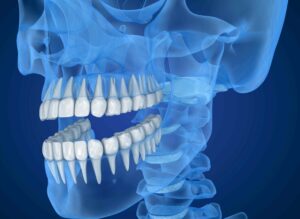
In our Asheville NC periodontal dental office, we feature some of the most advanced imaging and computerized technology available in the industry. These include:
LANAP Protocol Using PerioLase MVP-7: Efficiently and effectively treats periodontitis (advanced gum disease) with laser technology. It causes very little discomfort and has a quick recovery time. This has also been found to stimulate bone regrowth in damaged areas.
Dental Radiology With 3-D Cone Beam Technology: This imaging is ideal for diagnosis and treatment planning. The imaging covers the entire dentition area with clear views of the mandible and maxilla (upper and lower jaw).
CareStream Cone Beam Computer Tomography Imaging: This computerized tomography provides imaging in exceptional detail and range.
CS 3600 intraoral scanner: Patients no longer have to endure having impressions made with bulky, gloopy trays held in their mouths! This quickly and comfortably scans the mouth’s interior for digital impressions using a small, handheld scanner. It can also reach difficult–to–access areas in the patient’s mouth with improved patient comfort.
Simplant Dental Software for Computerized Dental Implant Placement: This system helps in pre-surgical positioning of dental implants on the computer, using a 3D model of the patient’s jaw. This aids in the selection of the implant type that ensures a precision fit.
Intraoral Camera Technology: This provides outstanding quality of images within the mouth. These images are sent to screen for a clear, crisp view so we can confer with patients on specific treatment issues.
Computer Imaging In Treatment Suites: Treatment suites are equipped with computers for convenient image sharing with patients.
Advanced Sterilization: Our custom sterilization unit adheres to (or exceeds) CDC guidelines for instrument processing protocols, particularly in the cleaning of instruments.
Fully-Equipped Surgical Suites: Relax during treatment while surrounded by beautiful mountain views of Asheville.
My staff and I also take great pride in providing patients with optimal comfort, along with an environment of respect. Some adults comes to us embarrassed by the condition of their oral health or missing teeth. Here, we strive to make patients feel they are not only in the right hands, but they are in the right place.
Comfort is supported by our sedation options. These include oral and I.V. sedation. Also referred to as “twilight sleep” or “sleep dentistry,” these sedatives are administered by skilled professionals who utilize advanced safety monitoring equipment.
I believe that the rampant number of people who have gum disease in the U.S. is largely in part due to being unaware of the symptoms. Some are easily ignored or “brushed off” as normal.
This is why it is important to be familiar with the signs and symptoms, which include:
• Red, swollen or tender gums or other pain in your mouth
• Bleeding while brushing, flossing, or when eating certain foods
• Gums that are receding (pulling away from the teeth) or make the appear teeth longer than normal
• Loose or separating teeth
• Pus between your gums and teeth
• Sores in your mouth
• Persistent bad breath
• A change in the way your teeth fit together when you bite
• A change in the fit of partial dentures
If you have any of these, you are urged to seek periodontal care as soon as possible. This disease will only worsen without treatment.
Call 828-274-9440 to schedule a consultation in our state-of-the-art Asheville periodontal dental office.
Nothing To Fear To Accomplish Healthy Smile Here
Posted on Apr 16, 2023 by William J. Claiborne, DDS MS
As a dental specialist, I find that many people are unfamiliar with exactly what a periodontist does. Yet, when they are recommended to see me (typically by their general dentist), it is because they need specialized care that falls under our unique set of skills.
A periodontist has advanced skills to help patients with a variety of needs that involve the gum tissues. These include:
– Treatment of all stages of gum disease (gingivitis, pregnancy gingivitis, periodontal disease, periodontitis)
– Reshaping gum tissues for esthetic enhancement (crown lengthening, gingivectomy for ‘gummy smiles’, repairing areas of gum recession)
– Diagnosis and placement of dental implants
– Treatment of lesions or cysts in oral tissues
Let’s begin with gum disease.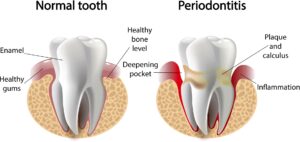
Because the majority of care I provide has to do with the treatment of all stages of periodontal disease, it may be helpful to understand how this develops. Although many people delay or avoid regular dental care (mistakenly thinking “if nothing hurts, then nothing must be wrong”), I have a close-up view of its destructive nature. Its formation creates cavities, periodontal (gum) disease, and leads to eventual tooth loss.
Even people who are committed to a regimen of thorough at-home oral hygiene (twice-daily brushing, daily flossing), can be doing an insufficient job of removing the daily buildup of plaque. Plaque is a sticky film of bacteria that accumulates in the mouth. When not thoroughly removed, it can harden into a mass that attaches to the base of, or in-between, teeth.
In the form of tartar, this cement-hard mass of bacteria cannot be brushed or flossed away. Once tartar forms, it can only be removed by a dentist or hygienist using special tools. Without removal, it will continue to amass and attack gum tissues, working its way beneath the gum line.
Below the gums lie the support system for natural teeth, consisting of tissues, ligaments and bone. When the bacteria reach an uncontrollable level, they become infectious. As these infectious bacteria accumulate further, symptoms of gum disease become more apparent, such as tender or swollen gums or seeing blood in the sink when brushing teeth. Breath odor may be bad on a regular basis.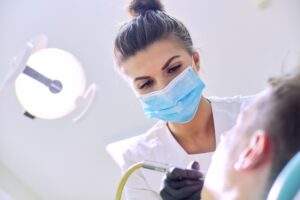
As symptoms worsen, the gums become red with infectious and loosen their grip around the base of teeth. The gums may become spongy and pus pockets may form. Breath odor at this point is persistently putrid. Eventually, the structures that support teeth are compromised and teeth may loosen. Gum disease is the leading cause of adult tooth loss in the U.S.
Research has found that certain strains of oral bacteria from gum disease create reactions in the body that can trigger systemic inflammation. Thus far, research findings have shown a correlation between periodontal disease bacteria and some cancers (including pancreatic and lung), Alzheimer’s disease, pre-term babies, heart disease, stroke, diabetes, arthritis and erectile dysfunction (ED).
As if all that weren’t bad enough, one study suggests that gum disease relates to a reduction in one’s quality of life: “Periodontal disease has been linked to lower quality of life.” “Quality of life encompasses several domains, including psychological functioning and social relationships among others. Oral health-related quality of life has been shown to be reduced in patients with periodontal disease.” (https://www.hindawi.com/journals/prm/2017/5491923/)
While estimates show about 75 percent of American adults have some degree of dental fear or anxiety, over 47 percent have some level of periodontal disease. As a periodontist, both are alarming numbers. Nearly half our nation is walking around with a potentially life-threatening disease in their mouths.
Treating this may sound like it would be pretty intimidating. However, Although there are many treatments offered and at various levels, our main goal is to provide patients with comfortable and positive experiences at every visit. One way we accomplish this is through the advanced technology featured here in our Western North Carolina periodontal dental office. We feature some of the most advanced in dentistry, much of which is not available in dental offices elsewhere. Some of these features include:
LANAP With PerioLase MVP 7: Laser-Assisted New Attachment Procedure is an advanced protocol that efficiently and effectively treats advanced gum disease with the added advantages of a dental laser. This offers a non-surgical alternative for patients with moderate to severe periodontal disease. LANAP treatment leaves very little discomfort and has a quick recovery time. It has also been found to stimulate bone regrowth in damaged areas.
3D Cone Beam Imaging: Ideal for diagnoses and treatment planning, these images provide a clear view of the upper and lower jaw, used for: intricate review of endodontics; periodontics; orthodontics; implantology: TMJ; and prosthodontics, as well as dental and maxillofacial surgery. Because cone beam radiographs show sagittal, axial, and coronal planes, locating and tracking nerve canals optimizes implant placement. The process is quick, painless and at minimal levels of radiation.
CareStream Cone Beam Computer Tomography Imaging: This enhanced tomography works with 3D imaging for exceptional detail and range.
CS 3600 Intraoral Scanner: Rather than make impressions with bulky, goopy trays, this scanner quickly and comfortably captures digital impressions accurately and easily for creating precision models or appliances (crowns, inlays, onlays, bridges, orthodontic appliances and aligners, custom abutments). The scanner can also reach difficult–to–access areas in the patient’s mouth for superior results with improved patient comfort.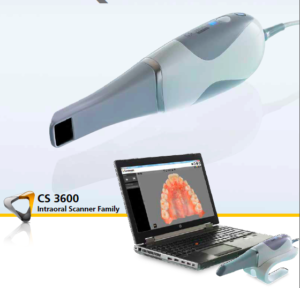
Computerized Dental Implant Placement: This advanced system for pre-surgical positioning of dental implants uses a 3D model of the patient’s jaw. Once the implant type is selected, a template is developed for optimal treatment success, even for complex cases.
In addition, we offer a unique environment for comfort. We understand how dental fear or anxiety can cause people to delay or avoid having dental treatment, sometimes for decades. We believe that every patient deserves respect, a gentle touch and knowing they are in a “lecture free” zone. For those who have high fear levels, we offer several sedation options, including oral and IV sedation.
Oral sedation is a pill that helps patients relax. It also has an amnesiac effect, leaving most with little or no memory of treatment afterward.
I.V. sedation (also known as ‘twilight sleep’) places the patient in a deeper sleep state and erases memory of the procedure. It is administered by a doctor of anesthesiology for optimal comfort and safety. In our Asheville office, anesthesia is overseen by a Medical Doctor (MD) who is a board certified Anesthesiologist.
With both sedation options, patients are closely monitored with advanced safety equipment throughout treatment.
I hope I’ve given you a helpful and positive picture of what a periodontist does and how he/she can help you with some challenging needs; all the while keeping you comfortable, minimizing treatment time, and shortening treatment time.
Although most of our patients are referred to us by other dentists and dental specialists, a referral is not required for accepting a new patient. Call 828-274-9440 if you feel we can make recommendations for your specific needs or provide helpful information.
Absorbent Gums Are On Front Line of “Hidden” Toxin Intake
Posted on Mar 15, 2023 by William J. Claiborne, DDS MS
When you hear someone mention the “gums,” the word often includes the pink, moist area inside the mouth. Not just the area inside the cheeks and under teeth, your oral tissue (“gingiva”) goes beyond what covers the upper and lower jaws and that which surrounds the base of the teeth. This includes …
• the lips
• inner lining of the lips and cheeks
• hard and soft palate
• gums that surround the base of teeth
• floor of the mouth under the tongue
• area behind wisdom teeth
• front two-thirds of the tongue
By design, these moist areas within the “oral cavity” are highly absorbent, so much so that these tissues absorb from anything put inside the mouth, including that which is quickly swallowed.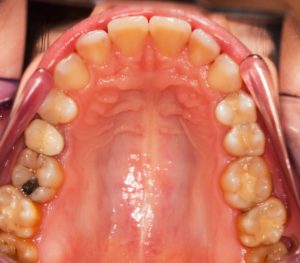
To help you understand just how important it is to maintain GOOD oral health, I thought it would be beneficial to share some of the BAD that the gum tissues endure. Because the mouth is the entry point for our bodies, you may be interested in seeing what foods and beverages contain some pretty scary ingredients.
According to the Environmental Working Group (www.ewg.org), these items include:
Nitrates and nitrites – are preservatives used in cured meats and linked to stomach cancer, esophageal cancer, and possibly brain and thyroid cancers.
Artificial sweeteners – can affect the hormones that regulate metabolism and have a negative effect on weight control.
Potassium Benzoate – A main ingredient in fireworks and rockets, this chemical preservative is found in many foods and beverages. It is commonly found in fruit juice, sparkling waters, soft drinks, jams, syrups and more.
Titanium dioxide – is a color additive used mostly in candy, which can damage DNA.
PFAS (polyfluoroalkyl “forever chemicals”) are used in food packaging and known to leach into the food itself. They increase the risk of cancer and damage the immune and reproductive systems, among many other health harms.
BVO (Brominated vegetable oil) – is used to stabilize citrus flavors in sodas and fruity drinks. It can cause neurological harm.
BHA (Butylated hydroxyanisole) – is a preservative used in cured meats and other foods. Multiple sources have identified it as a possible human carcinogen.
BHT (Butylated hydroxytoluene) – is a preservative found in cereals and other foods. This chemical cousin of BHA is a possible human carcinogen.
TBHQ (Tert-butylhydroquinone) – is a preservative used in Pop-Tarts and other processed foods. It may harm the immune system and weaken the effectiveness of vaccines.
Propyl paraben – is a preservative used in pastries and some tortillas. It causes developmental and reproductive harm.
That’s quite the long list. However, an even greater challenge to the gums comes from smoking. While everyone who smokes knows it’s “not good” for their health, it is less known the harm doesn’t come from the nicotine alone.
The American Lung Association lists the chemical culprits as:
Acetone—found in nail polish remover
Acetic acid—an ingredient in hair dye
Ammonia—a common household cleaner
Arsenic—used in rat poison
Benzene—found in rubber cement and gasoline
Butane—used in lighter fluid
Cadmium—active component in battery acid
Carbon monoxide—released in car exhaust fumes
Formaldehyde—embalming fluid
Hexamine—found in barbecue lighter fluid
Lead—used in batteries
Naphthalene—an ingredient in mothballs
Methanol—a main component in rocket fuel
Nicotine—used as an insecticide
Tar—material for paving roads
Toluene—used to manufacture paint
Puffing on E-cigs as a “safer” alternative? That doesn’t preclude your oral health from the bombardment of chemicals in the vapor. Although the Food & Drug Administration (FDA) has not begun its review of any e-cigarette or its ingredients. Unfortunately, this means they have yet to issue standards on these products or submit specific warnings of their composition and effects.
 The “e-juice” that fills the cartridges of e-cigs usually contain nicotine (which is extracted from tobacco and highly addictive), propylene glycol, flavorings and other chemicals. Studies have found that even e-cigarettes claiming to be nicotine-free contain trace amounts of nicotine. Additionally, when the e-liquid heats up, more toxic chemicals are formed.
The “e-juice” that fills the cartridges of e-cigs usually contain nicotine (which is extracted from tobacco and highly addictive), propylene glycol, flavorings and other chemicals. Studies have found that even e-cigarettes claiming to be nicotine-free contain trace amounts of nicotine. Additionally, when the e-liquid heats up, more toxic chemicals are formed.
Whether your e-cigarette contains nicotine or not, you may be surprised at the toxic toxic vapors contents below …
• Nicotine – a highly addictive substance that negatively affects adolescent brain development
• Propylene glycol – a common additive in food; also used to make things like antifreeze, paint solvent, and artificial smoke in fog machines
• Carcinogens- chemicals known to cause cancer, including acetaldehyde and formaldehyde
• Acrolein – a herbicide primarily used to kill weeds, known to cause irreversible lung damage
• Diacetyl – a chemical linked to a lung disease called bronchiolitis obliterans, or “popcorn lung”
• Diethylene glycol – a toxic chemical used in antifreeze that is linked to lung disease
• Heavy metals such as nickel, tin, lead
• Cadmium – a toxic metal found in traditional cigarettes that causes breathing problems and disease
• Benzene – a volatile organic compound (VOC) found in car exhaust
• Ultrafine particles that can be inhaled deep into the lungs
What does all this mean? As an Asheville periodontist, it shows that the gums – on the front line of intake – take the first brunt of these chemicals and toxins, often when we don’t even realize we’re providing willing intake. It also shows how important it is to keep the mouth healthy.
The periodontal dental specialty is especially attuned to how the gums are more than the pink covering in the mouth. Healthy gums are known to support your overall well-being. In addition to being consumer-aware of what your mouth encounters, it is necessary to maintain a thorough oral hygiene routine at home and an involved relationship with your general dentist.
However, if you see signs of gum disease (bleeding or sore gums, persistent bad breath, receded gums, and/or gums that are red rather than a healthy pink), it is important to see a periodontal specialist as soon as possible. Gum disease will only worsen without treatment. It can also allow infectious bacteria to enter the bloodstream, which research has linked to serious (and even deadly) health problems.
Call our Asheville periodontal dental office to schedule a consultation. If fear or anxiety has prevented you from regular dental visits, we can discuss several options (including oral or IV sedation) to provide comfortable, relaxed appointments. Our friendly staff can help you arrange this private time together by calling 828-274-9440.
Sources:
https://www.cancer.gov/publications/dictionaries/cancer-terms/def/gums
https://www.lung.org/quit-smoking/smoking-facts/whats-in-a-cigarette
https://www.ewg.org/consumer-guides/ewgs-dirty-dozen-guide-food-chemicals-top-12-avoid
Recent Posts
Categories
Archives
- September 2024
- August 2024
- July 2024
- June 2024
- May 2024
- April 2024
- March 2024
- February 2024
- January 2024
- December 2023
- November 2023
- October 2023
- September 2023
- August 2023
- July 2023
- June 2023
- May 2023
- April 2023
- March 2023
- February 2023
- January 2023
- December 2022
- November 2022
- October 2022
- September 2022
- August 2022
- July 2022
- June 2022
- May 2022
- April 2022
- March 2022
- February 2022
- January 2022
- December 2021
- November 2021
- October 2021
- September 2021
- August 2021
- July 2021
- June 2021
- May 2021
- April 2021
- March 2021
- February 2021
- January 2021
- December 2020
- November 2020
- October 2020
- September 2020
- August 2020
- July 2020
- June 2020
- May 2020
- April 2020
- March 2020
- February 2020
- January 2020
- December 2019
- November 2019
- October 2019
- September 2019
- August 2019
- July 2019
- June 2019
- May 2019
- April 2019
- March 2019
- February 2019
- January 2019
- December 2018
- November 2018
- October 2018
- September 2018
- August 2018
- July 2018
- June 2018
- May 2018
- April 2018
- March 2018
- February 2018
- January 2018
- December 2017
- November 2017
- October 2017
- September 2017
- August 2017
- July 2017
- June 2017
- May 2017
- April 2017
- March 2017
- February 2017
- January 2017
- December 2016
- November 2016
- October 2016
- September 2016
- August 2016
- July 2016
- June 2016
- May 2016
- April 2016
- March 2016
- February 2016
- January 2016
- December 2015
- November 2015
- October 2015
- September 2015
- August 2015
- July 2015
- June 2015
- May 2015
- April 2015
- March 2015
- February 2015
- January 2015
- December 2014
- November 2014
- October 2014
- September 2014
- August 2014
- July 2014
- June 2014
- May 2014
- April 2014
- March 2014
- February 2014
- January 2014
- December 2013
- November 2013
- October 2013
- September 2013
- August 2013
- July 2013
- June 2013
- May 2013
- April 2013
- March 2013
- February 2013
- January 2013
- December 2012
- November 2012
- October 2012
- September 2012
- August 2012
- July 2012
- June 2012


